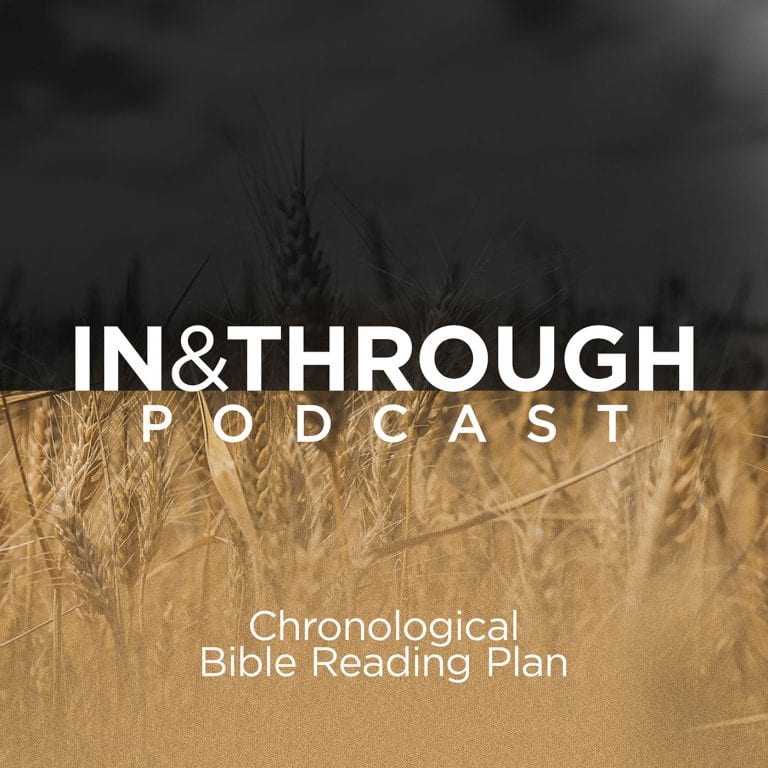The field of apologetics has begun to shift in recent years. As the Western world shifts as a whole, and our collective Christian memory fades more and more from people’s minds, there is a corresponding shift in our world’s primary objections to the Christian faith. The questions which once were at the forefront of many skeptics’ and seekers’ minds have been replaced by new objections.
These are the kinds of objections that Abdu Murray tackles head-on in his book “More Than a White Man’s Religion: Why the Gospel Has Never Been Merely White, Male-Centered, or Just Another Religion”.
Murray, trained as a lawyer with many years of learning and experience in the field of apologetics, aims to tackle key objections to the Christian faith that are at the forefront of many minds in our present day and age. He specifically addresses the allegation that Christianity is a religion that “supports social evils like racism, sexism, and judgmentalism” (2), with the former two functioning as the primary objections that Murray focuses his writing on.

More Than a White Man’s Religion: Why the Gospel Has Never Been Merely White, Male-Centered, or Just Another Religion
More Than a White Man’s Religion: Why the Gospel Has Never Been Merely White, Male-Centered, or Just Another Religion
This book should help start discussions, open previously closed avenues of conversation, and shine a light that cuts through the caricatures and mischaracterizations of the Christian faith to encounter God as he truly is.
Summary
The basic argument he makes is “that where we have seen racism, misogyny, and hypocrisy in history, they have come from hearts and minds acting inconsistently with the gospel message and the example of Jesus.” (5). Or, to put it positively, “[his] aim, humbly, is to show that the gospel message is the wrong target of our collective outrage because it may be the solution to the very ills for which it is blamed” (11).
Murray lays out his book simply. The first three chapters are dedicated to addressing the present state of affairs, as he explains the nature of present attitudes towards the Christian faith, articulates the very mixed history of the worldwide church when it comes to these social sins (here he focuses on issues of race) and points out the bankruptcy of other, god-less approaches to rectifying these social sins.
The next two sections, consisting of two chapters each, are where Murray addresses the allegations of Christianity’s inherent racism and misogyny head-on. Each section follows the same pattern, as he takes the first chapter to interact with the general teachings of the scriptures that people take umbrage with, and the second chapter to zoom in on the gospel writers’ particular testimony to how Jesus’ life speaks into these issues.
The final section of the book is a single chapter dedicated to presenting Jesus as the person in whom we find the solution to the social sins of Christendom that our culture is so (rightly) repelled by.
Virtues
From the very beginning of his book, Murray’s writing is marked by honesty and clarity. He is honest in his assessment of the past and present failures of many who would claim the name of Christ, admitting that “Christendom…has had its pockmarked history of racism, sexism, and social ills” (16). Throughout Murray’s writing, he is clear and honest about the many reasons Christendom has given people to be skeptical of Christianity’s claims, because, as Murray highlights, “the credibility of the message is always judged by the integrity of the messenger” (39).
He is equally honest and clear about the remarkable social good that Christianity has brought about. He points out how Christianity’s “transcendent view of moral values and duties is what compelled and impelled so many civil rights leaders in America and anti-apartheid activists of South Africa to work for fundamental change” (54). Rather than allowing the spirit of the age to write off all Christian thinking as incapable of remedying the social ills of the day, Murray points out the myriad of ways in which significant justice renewal movements that the secular world celebrates have been the direct result of consistent applications of Christian thinking and living.
Murray’s approach to interpreting the Bible, especially the Old Testament law, stands out for the clarity it brings to controversial passages. Beginning by clarifying the difference between “involuntary chattel slavery [of the transatlantic slave trade and] voluntary and temporary servitude” (85), he shows how the Old Testament law regulates the latter kind of servitude, rather than the former (86).
His approach to the Old Testament laws which govern marriage and divorce is similar. Rather than placing imbalanced burdens and restrictions upon women in issues of marriage and divorce, Murray shows how these “Israelite laws…make it unlawful [for a man] to do the kinds of things that would drive a woman to seek divorce” (157). Such laws simply did not exist in the surrounding cultures of the time, and women were treated as “property belonging to men” (156).
A final comment should be made on the transparency and humility with which Murray writes. Though he makes his arguments through careful examination of relevant biblical texts, thorough critique of alternative solutions posed by secular thinkers, and helpful references to church history, the way in which he speaks is filled with evidence of his heart for those who struggle with the questions he is seeking to address.
His explanations flow from his account of significant conversations he has had with those who struggle personally with such questions (19-20). His own experiences of racism (105-106) and the testimony of women in his life (202-204) make evident his understanding and heart for people who have particular personal pain stemming from racism and misogyny. He is not writing merely a calculated apologetic volume—Murray writes from a posture of care and love for his readers.
Criticism
There are also a few areas where small adjustments or elaborations may be helpful in the larger case that Murray is building. The first is regarding his lack of clear definitions. When entering into discussions in our day and age regarding things like racism and misogyny, let alone even more essential definitions like human dignity and equality, there is no shortage of ways in which these words take on different definitions depending on who is using them.
While over the course of the book, we catch glimpses of what is likely Murray’s working definition, the wide range of ways in which people use the very same words suggests that it would be beneficial to his larger argument to be clear and up-front with his own working definitions.
The risk Murray runs by not explicitly defining his terms is the possibility that his readers may finish his book without having their misconceptions about what the restoration that the Christian faith anticipates challenged or corrected. Perhaps he intends to lean into the way God’s common grace creates in humanity a shared recognition that things are not yet as they should be, and longing for justice to be brought to bear on those situations. There remains a very real risk that comes when we assume even those outside the church have the same vision of the future of society without ever clarifying that we mean the same things when we use the same words.
The second critique is related to the first. Murray’s lack of clarity regarding his working definition of misogyny leads to unclear implications for those who maintain complementarian convictions. While he does go out of his way to legitimate complementarian views of gender roles by appealing to complementarian sources like Kathy Keller, and he does articulate that both “views share the same starting line on gender equality” (166), his interpretations of key New Testament texts—1 Corinthians 14:33b-34 and 1 Timothy 2:11-15 are the ones he interacts with in particular—follow lines of egalitarian reasoning.
He argues that the prohibitions in each text are limited to women who speak “in a manner that usurped a teaching authority they had not yet earned and spread heresy” (176) and against women who were guilty of “false teaching [which lead] to seizing of authority neither given nor earned through proper training” (177).
This proposed interpretation claims that the primary biblical texts from which many Christians articulate their complementation convictions make no such argument. In employing this line of reasoning to show that the New Testament does not support misogyny, an appropriate inference seems to be that those who interpret these texts to be prohibiting women not merely from seizing undeserved authority, but to be positively clarifying those to whom God has delegated leadership of his church, are themselves guilty of misogyny. While Murray never positively affirms this, it does not seem to be an uncharitable extrapolation of his line of reasoning.
This is where the issue of definitions returns. Is misogyny defined by attitudes or actions? Is it misogynistic to limit certain roles or offices on the basis of sex? As his working definition of misogyny seems to require a full openness to women in all aspects of church leadership, one must wonder how Murray would answer these questions, given that it is no small number of churches and denominations who have long interpreted these passages in ways which lead to complementarian convictions.
Not only is the character of many conservative churches in question because of a lack of clarity around what constitutes misogyny, but there are questions regarding other actions of God himself that naturally arise. If complementarian interpreters of biblical texts fall into misogyny in limiting any roles in the church to men only, how does God escape the same charge of misogyny when in the Old Testament he appointed only sons of the tribe of Levi to minister in the Temple (Numbers 4:1-3; 8:23-26)? How does Jesus himself avoid the charge of misogyny in his choice of twelve male disciples, and in his particular commission of twelve male apostles to launch and lead his church?
These are some of the next questions raised by Murray’s combination of a lack of clear definitions along with his use of egalitarian explanations of key texts. This particular aspect of the critique is not intended to suggest that Murray should argue for a perspective that he may not share himself. Rather it is intended to point out how his lack of articulated definitions raises larger questions that complementarians in particular will need to anticipate if they use Murray’s work here as a conversation tool with those who struggle with issues of misogyny in particular.
Murray’s work to counter the myths of the Anglo-centric, male-centeredness of the Christian religion is a helpful and important work, given this is where many people have the strongest objections. Through his clear, humble, and loving writing, Murray points people to the true character of God as revealed in the person of Jesus, and shows how all of the Bible points.
This book should help start discussions, open previously closed avenues of conversation, and shine a light that cuts through the caricatures and mischaracterizations of the Christian faith to encounter God as he truly is.



















